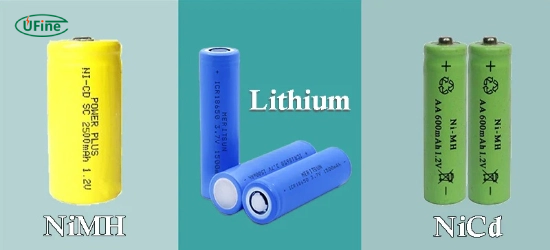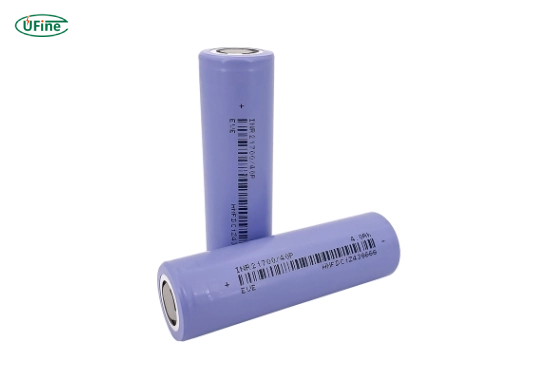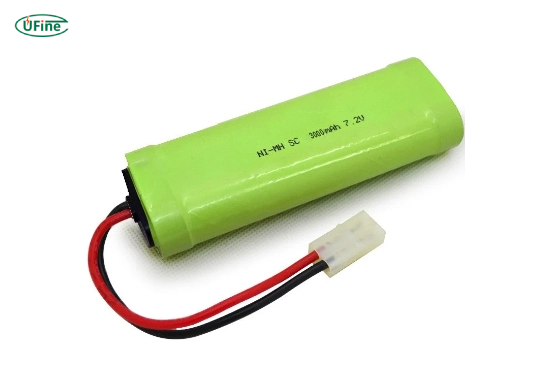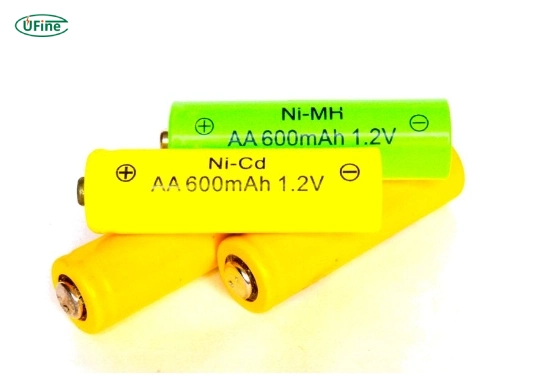
- Part 1. What are rechargeable batteries for solar lights?
- Part 2. Why do solar lights need specific rechargeable batteries?
- Part 3. Lithium-ion batteries: Power-packed and long-lasting
- Part 4. NiMH batteries: A versatile and eco-friendly choice
- Part 5. NiCd batteries: Budget-friendly but harmful to the environment
- Part 6. Key differences between lithium, NiMH, and NiCd batteries
- Part 7. How to choose the best rechargeable battery for your solar lights?
- Part 8. Benefits of using the best rechargeable batteries for solar lights
- Part 9. How to maximize battery life in solar lights?
- Part 10. FAQs about the best rechargeable batteries for solar lights
If you are looking for the best rechargeable batteries for solar lights, it is important to understand the differences between the three most common types: Lithium-ion, NiMH, and NiCd. Choosing the right battery type can significantly improve your solar-powered lighting system’s performance, lifespan, and reliability.
This comprehensive guide compares these battery types regarding capacity, cost, durability, and environmental impact. Whether you are installing pathway lights, garden lanterns, or security lighting, this article will help you make an informed buying decision.
Part 1. What are rechargeable batteries for solar lights?
Rechargeable batteries for solar lights are energy storage units that collect and store power from solar panels during daylight hours. At night, they release that stored energy to illuminate the light fixture. These batteries are designed for frequent charging and discharging cycles, making them ideal for solar applications.
The three main types of rechargeable batteries used in solar lights are:
- Lithium-ion (Li-ion) batteries
- Nickel-Metal Hydride (NiMH) batteries
- Nickel-Cadmium (NiCd) batteries
Each type has unique characteristics that make it more or less suitable for specific use cases. Understanding these differences is essential for choosing the battery that meets your energy demands, environmental conditions, and budget.
Part 2. Why do solar lights need specific rechargeable batteries?
Solar lights operate on low-voltage systems and are exposed to outdoor environments. Unlike standard household rechargeable batteries, those used in solar lights must perform reliably under daily exposure to sunlight, temperature fluctuations, and moisture.
Here are the main reasons why solar lights require specific rechargeable batteries:
- These batteries are built to handle quick charging from solar cells, which may not always provide a stable current.
- They can withstand shallow charge cycles that vary depending on sun exposure throughout the day.
- They are often designed with water-resistant casings or coatings to handle outdoor use.
- They have a longer shelf life under fluctuating temperatures and weather conditions.
Regular alkaline or incompatible rechargeable batteries can reduce light output, shorten battery life, or even cause battery leakage or explosion.
Part 3. Lithium-ion batteries: Power-packed and long-lasting
Are lithium-ion batteries the best rechargeable batteries for solar lights?
Yes. Lithium-ion batteries offer several advantages that make them ideal for high-performance solar lighting systems.
Key features of lithium-ion batteries:
- High energy density: They store more energy in a smaller size, which means longer run time.
- Low self-discharge rate: When not in use, they lose only about 1 to 2 percent of their charge per month.
- High cycle life: These batteries can last 1000 to 2000 complete charge-discharge cycles.
- Lightweight and compact: Perfect for compact solar fixtures.
Advantages:
- Excellent performance in hot and cold temperatures, typically between -20°C and 60°C.
- Faster charging times compared to other types.
- Long life reduces the need for frequent replacements.
Disadvantages:
- Generally, more expensive than NiMH and NiCd.
- Not all solar lighting systems are designed to accept lithium-ion batteries.
If your solar lights support lithium-ion batteries, they are often the best overall choice due to their efficiency, reliability, and lifespan.
Part 4. NiMH batteries: A versatile and eco-friendly choice
Are NiMH batteries good for solar lights?
Yes. NiMH (Nickel-Metal Hydride) batteries are a common and cost-effective choice for many solar lighting applications.
Key features of NiMH batteries:
- Moderate energy density: Lower than lithium-ion but higher than NiCd.
- No toxic metals: Safer for the environment compared to NiCd.
- Suitable for frequent charging: Can handle daily solar charging cycles well.
Advantages:
- More environmentally friendly than NiCd.
- Widely available in AA and AAA sizes, which are common in solar lights.
- More affordable than lithium-ion batteries.
Disadvantages:
- Higher self-discharge rate, typically 20 to 30 percent per month.
- Performance may decline in cold weather environments.
- Shorter lifespan compared to lithium-ion, generally around 500 to 800 cycles.
NiMH batteries are suitable for users who want to balance cost, performance, and environmental safety.
Part 5. NiCd batteries: Budget-friendly but harmful to the environment
Are NiCd batteries still good for solar lights?
NiCd (Nickel-Cadmium) batteries are still found in some older or inexpensive solar lights, but they have several limitations.
Key features of NiCd batteries:
- Low energy density: They store less energy than both lithium-ion and NiMH batteries.
- Memory effect: If not fully discharged regularly, they may lose capacity over time.
- Durable in extreme temperatures: They perform well in cold climates.
Advantages:
- Very affordable and easy to find.
- Can continue to operate in sub-zero temperatures.
Disadvantages:
- Contains cadmium, a highly toxic heavy metal.
- Shorter lifespan, often around 300 to 500 charge cycles.
- Poor energy efficiency compared to modern alternatives.
While NiCd batteries are still usable in certain situations, they are generally not recommended due to their environmental impact and limited performance.
Part 6. Key differences between lithium, NiMH, and NiCd batteries
The table below highlights the real-world performance characteristics of the three battery types used in solar lights:
| Feature | Lithium-ion | NiMH | NiCd |
|---|---|---|---|
| Nominal Voltage per Cell | 3.6V to 3.7V | 1.2V | 1.2V |
| Typical Battery Capacity (AA) | 2000–3000 mAh | 600–2500 mAh | 600–1000 mAh |
| Energy Density | 150–200 Wh/kg | 60–120 Wh/kg | 40–60 Wh/kg |
| Charge Cycles | 1000–2000 cycles | 500–800 cycles | 300–500 cycles |
| Self-Discharge Rate (Monthly) | 1–2% | 20–30% | 15–20% |
| Memory Effect | None | Minimal | Significant |
| Operating Temperature Range | -20°C to 60°C | 0°C to 45°C | -20°C to 50°C |
| Environmental Impact | Low | Low | High (toxic cadmium) |
| Cost | High | Medium | Low |
| Weight | Light | Medium | Heavy |
This comparison clarifies why lithium-ion batteries are typically preferred for modern solar lights, especially in demanding environments.
Part 7. How to choose the best rechargeable battery for your solar lights?
When choosing a rechargeable battery for your solar light, consider the following factors:
Compatibility with your solar light
Always check the user manual or original battery specifications.
Battery size and type
Common sizes include AA, AAA, and 18650 cells. Ensure you match the correct dimensions.
Capacity in milliamp-hours (mAh)
Higher capacity means longer lighting time. A 2500 mAh battery will last longer than a 1000 mAh one.
Voltage
Match the voltage requirements of your solar light. For example, replacing a 1.2V NiMH with a 3.7V lithium battery without proper support can damage the system.
Weather conditions
Lithium batteries offer better stability if you live in cold or hot climates.
Budget and usage frequency
For occasional use, NiMH might be sufficient. For daily use and long-term reliability, lithium is a better choice.
Part 8. Benefits of using the best rechargeable batteries for solar lights
Using high-quality rechargeable batteries in your solar lights offers many advantages:
- Consistent and brighter lighting throughout the night
- Longer lifespan, reducing the need for frequent replacements
- Better energy efficiency, maximizing use of solar power
- Improved safety, especially in extreme weather conditions
- Environmentally friendly solutions, especially with NiMH or lithium
Investing in the right batteries ensures you get the most out of your solar lighting system.
Part 9. How to maximize battery life in solar lights?
To extend battery life and maintain peak performance, follow these practical tips:
- Clean the solar panel surface regularly to ensure maximum sunlight absorption.
- Place solar lights in full sun for at least 6 to 8 hours daily.
- Use quality batteries from reputable brands.
- Store solar lights indoors during the winter if temperatures drop below freezing.
- Avoid mixing old and new batteries in the same light fixture.
- Replace batteries every 1 to 2 years, depending on the type and usage.
Proper care and maintenance can double the effective lifespan of your rechargeable batteries.
Part 10. FAQs about the best rechargeable batteries for solar lights
Can I use regular AA batteries in solar lights?
No. Regular AA batteries are not rechargeable and are not designed for solar charging. Using them can cause leakage or damage to your solar light.
How long do rechargeable batteries last in solar lights?
- Lithium-ion: 2 to 5 years
- NiMH: 1.5 to 3 years
- NiCd: 1 to 2 years
Lifespan depends on the battery quality and how often the light is used.
Can I upgrade from NiCd to NiMH or lithium?
Sometimes. You can usually replace NiCd with NiMH if the voltage and size match. Upgrading to lithium may require changes to the internal circuitry or controller.
What is the best battery for cold weather?
Lithium-ion and NiCd batteries perform better in low temperatures compared to NiMH. For very cold environments, choose lithium over NiMH.
Why are my solar lights dim or not working?
This may be due to old or dead batteries, dirty solar panels, or insufficient sunlight. Try cleaning the panel and replacing the battery with a fresh one.
Related Tags:
More Articles

Does a Higher mAh Battery Last Longer?
Does a higher mAh battery really last longer? Learn what mAh means, real battery life in hours, replacement safety (4000 vs 5000mAh), and real examples.
Exploring the Lithium Ion Battery Fire Temperature
Discover the lithium-ion battery fire temperature and learn how to stay safe. Get essential tips to prevent battery fires and protect your devices today.
The Ultimate Guide to 6s Lipo Batteries
A beginner-friendly guide to 6S LiPo batteries. Understand voltage, capacity, charging tips, safety rules, and real-world applications.
What is the NCMA battery? What is the difference between it and the NMC battery? Which one is better? This article will answer your questions.
What Is the Lithium Battery Short Circuit?
What is the lithium battery short circuit? To understand a lithium battery short circuit, we first need to understand how the battery works.






